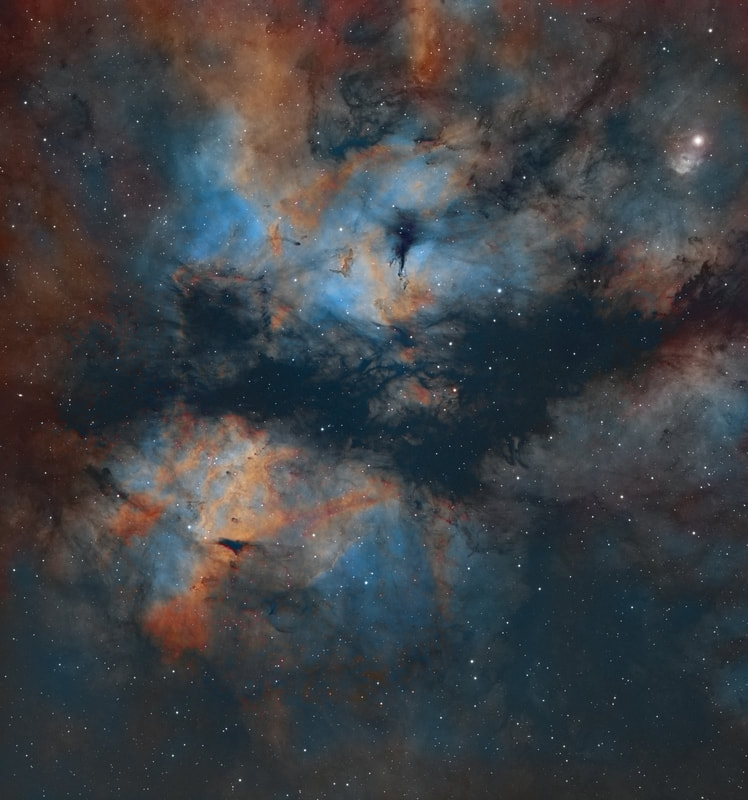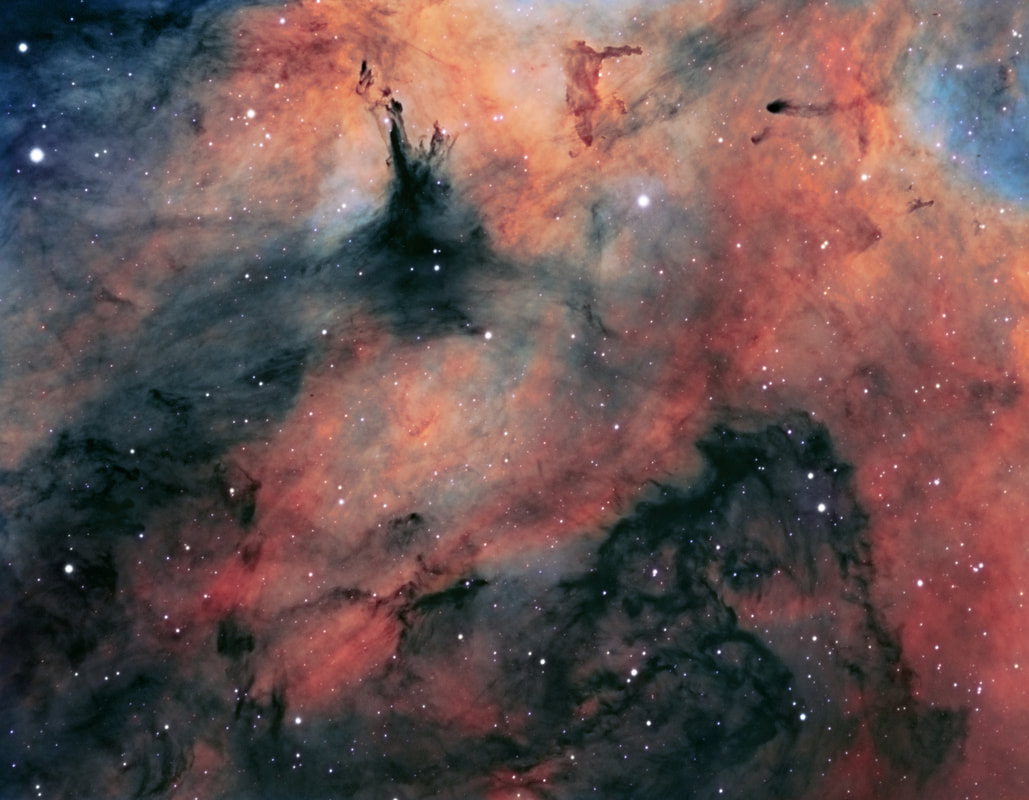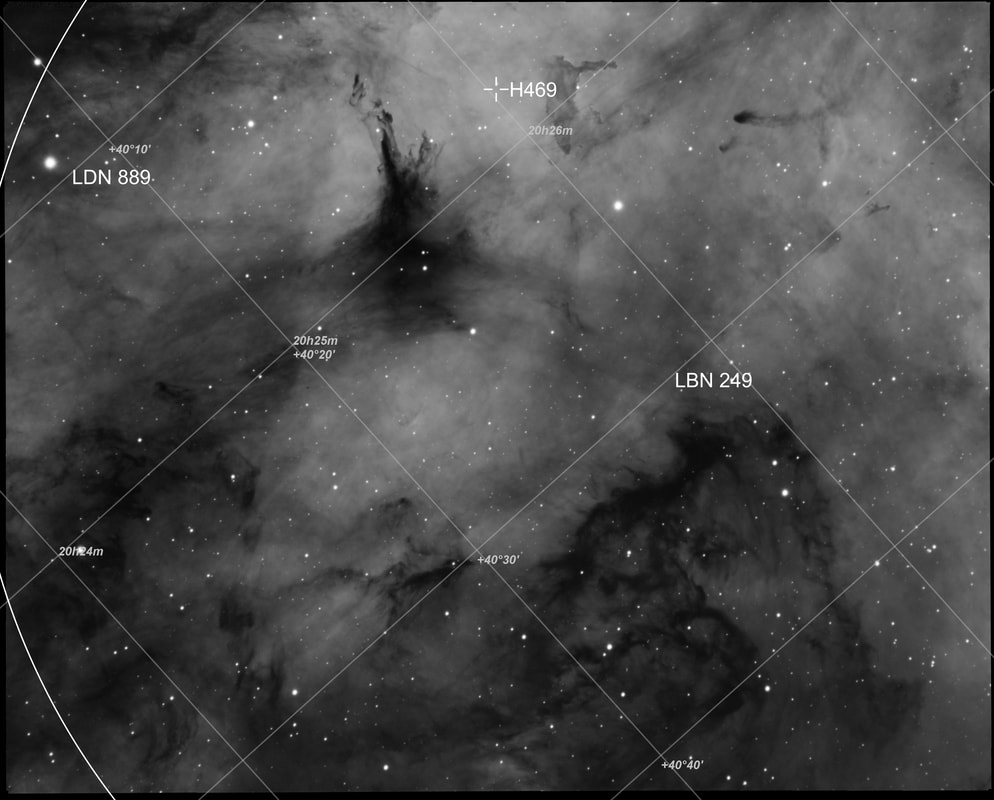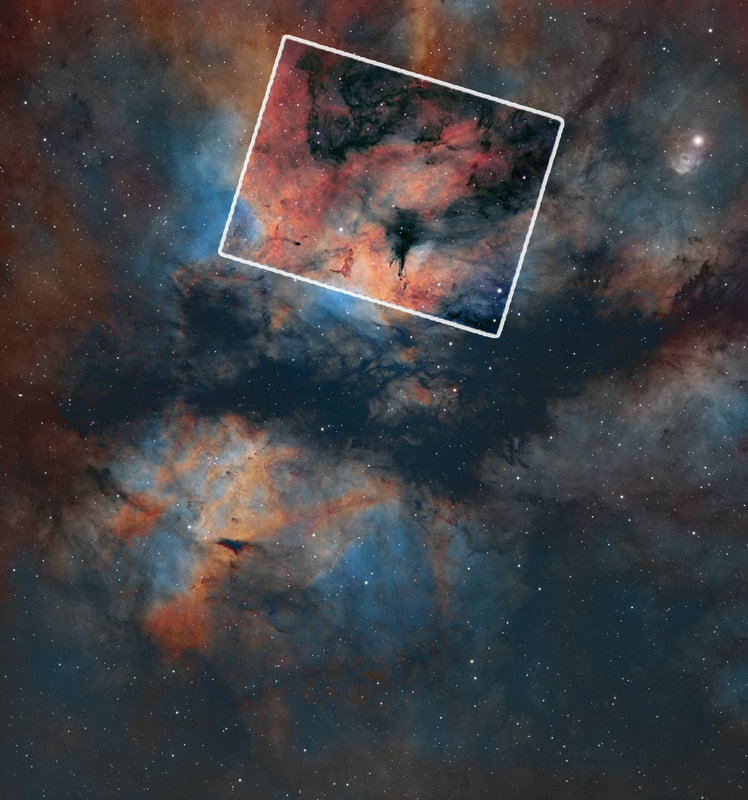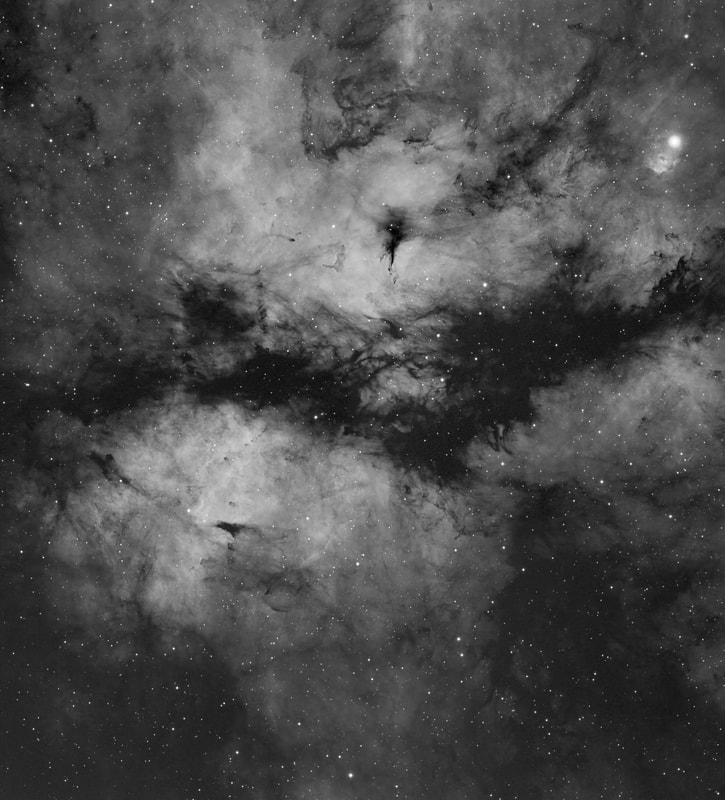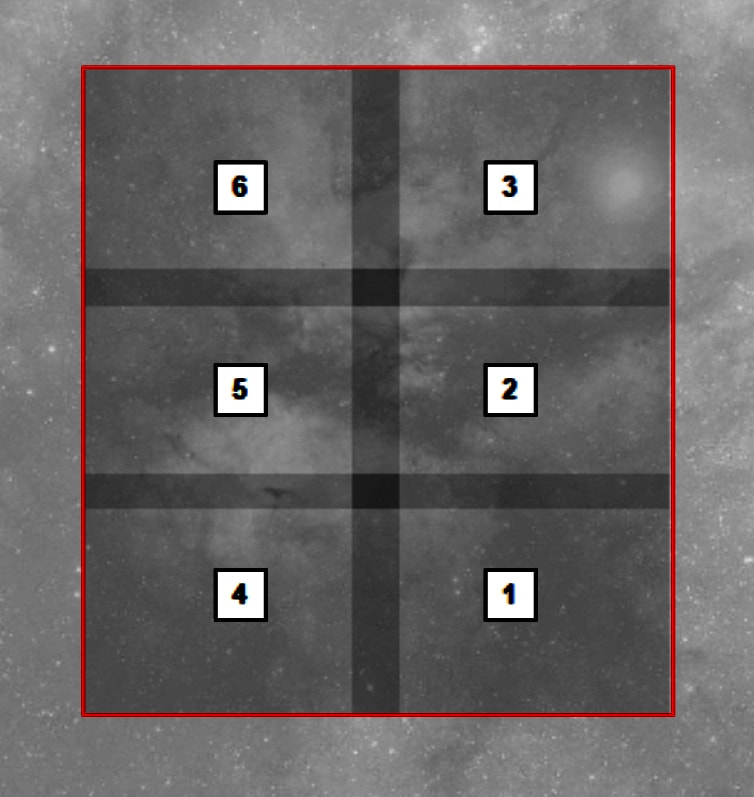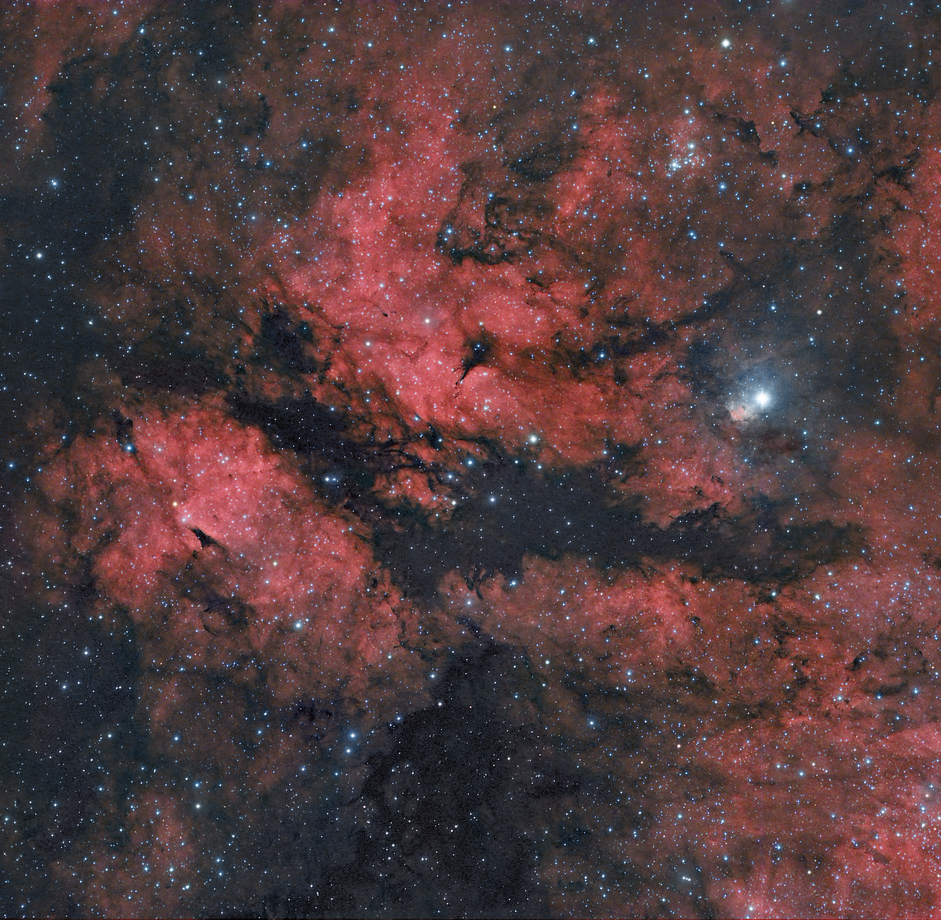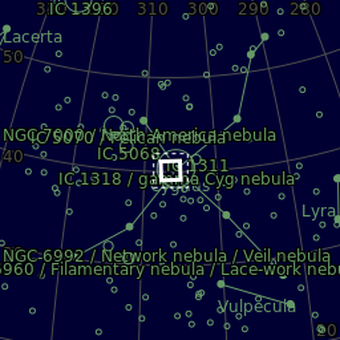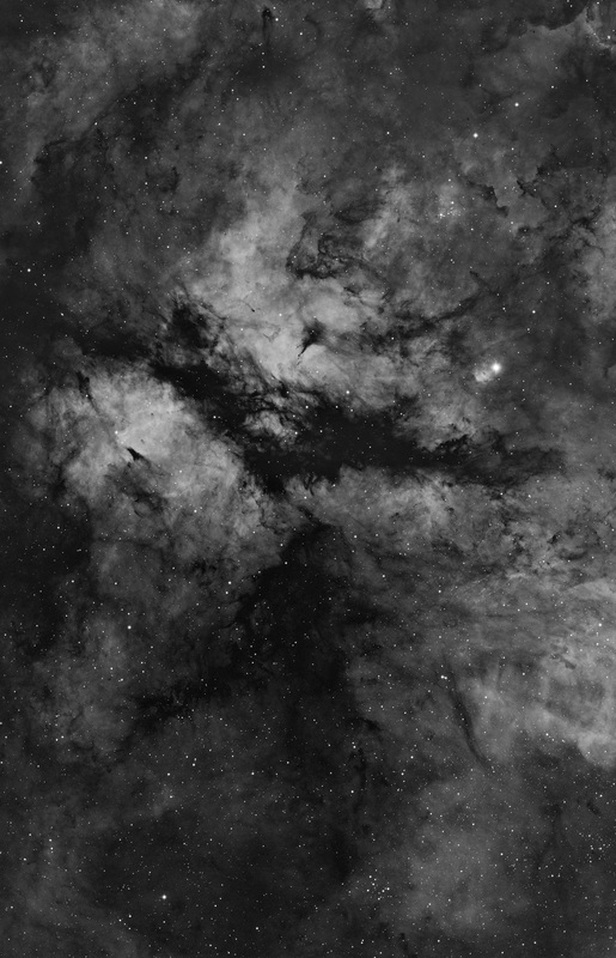IC1318 - The Butterfly nebula
Located in the constellation of Cygnus, this diffuse emission nebula is approximately 5000 light years from Earth. The bright star is Sadr or Gamma Cygni.
|
This colour image of the Butterfly nebula is a combination of two very different focal lengths. I have used the Ha data from the 6 pane mosaic as shown below and then to colourise it I have taken OIII and SII data in the short focal length scopes. As the OIII and SII is only adding colour and not detail (as that comes from the Ha data) this is a quick and easy way to add colour to mono images.
Details: Mount: Mesu 200 / EQ8 Telescope: TMB152/1200 / Takahsahi FSQ85 0.73x Camera: QSI683 with 3nm Ha Astrodon / Moravian G2-8300 with SII and OIII Astrodon filters Ha data 16x1800s in each pane - 48 hours 15x1800s in SII and 13x1800s in OII. This gives a total exposure time of 62 hours. This is an annoatated version of the close up image...... H469 refers to the Dobashi catalogue.
|
Details:
Mount: Mesu 200 Telescope: TMB152/1200 Camera: QSI690 with 3nm Ha, OIII and SII Astrodon filters 20x1800s Ha 23x1800s OIII 23x1800s SII Totalling 33 hours of data. |
This is a 6 pane mosaic taken with a scope of focal length 1200mm. You can see the way that the mosaic has been put together.
Details:
Mount: Mesu 200
Telescope: TMB152/1200
Camera: QSI683 with 3nm Ha Astrodon
There's a total of 16x1800s in each pane so in total there's 48 hours of total exposure time.
I am planning a colour image with OIII and SII, but I will take that data with the dual Taks at a shorter focal length as the colour detail doesn't need to be at such a high resolution as the Ha data which I'll use as a luminance channel.
Details:
Mount: Mesu 200
Telescope: TMB152/1200
Camera: QSI683 with 3nm Ha Astrodon
There's a total of 16x1800s in each pane so in total there's 48 hours of total exposure time.
I am planning a colour image with OIII and SII, but I will take that data with the dual Taks at a shorter focal length as the colour detail doesn't need to be at such a high resolution as the Ha data which I'll use as a luminance channel.
|
This is a combination of mono Ha and OSC data.
Details Mount: HEQ5 / Avalon Linear Fast reverse Telescope: Takahashi FSQ85 with 0.73x reducer Camera: Atik 460EXM, 3nm Astrodon filter and Starlight Express Trius M25C This is a combination of mono Ha data and OSC data for the colour. 11x1800s Ha 33x600s OSC Total integration time 11 hours |
Where IC1318 is located in the sky
